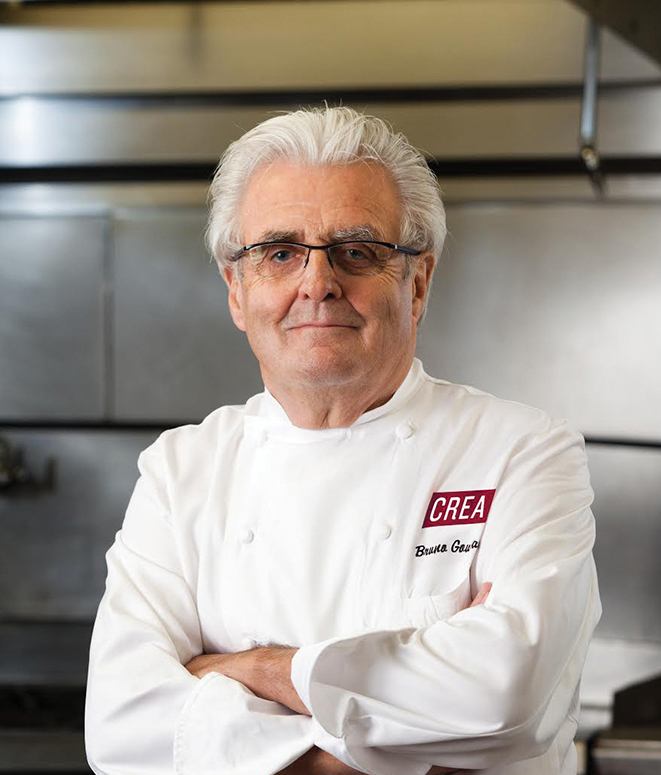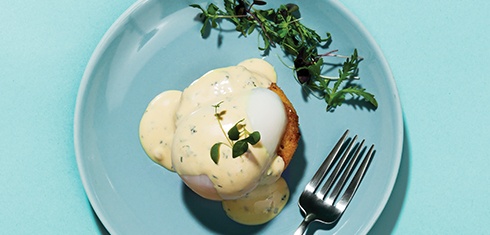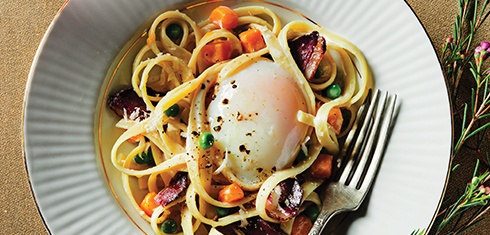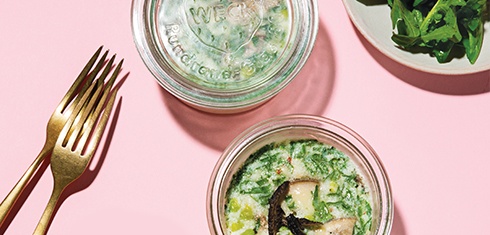What is the “perfect egg”?
We call it the perfect egg because it’s cooked just enough to retain a delicate, bright yellow, runny yolk and a silky, softly set white. It’s the safest, most consistently perfect version of a pasteurized poached egg. Sous vide allows precise control over how firm the white and yolk will become—and which type you want depends on the dish. Soft eggs with creamy yolks are delicious on top of herby pastas, with the yolk creating a savory sauce. Jammy eggs are best in soups like ramen.
Does sous vide deliver better eggs than conventional poaching or boiling?
With sous vide, there is no guessing. You don’t have to worry that one minute longer on the stove will yield rubbery whites or grainy yolks. Precise temperature control means more control over the egg’s texture. For the “perfect” soft-boiled egg with the just-set white and a runny yolk, cook sous vide for 45 minutes at 145.8°F (63.2°C).
Should I crack eggs before sous-viding them?
Eggs naturally come in a perfect vessel for sous vide—a shell! There’s no need to crack the eggs. In fact, vacuum sealing would likely break the yolks. Just place the whole eggs into a colander in the water bath to protect them from breaking against the side of the container, then lift or ladle them out when done. The airtight seal of the shells will ensure that the eggs sous vide safely.
Scientifically speaking, what happens to an egg as it cooks sous vide?
As an egg’s individual proteins heat up and cook, they tangle with each other to form solids. Whites will solidify before yolks do, so slow-cooking eggs gives you more opportunities to stop cooking before whites turn rubbery. When the perfect egg is cooked at a precise temperature, you just need to watch the time to adjust the egg yolk texture. At 45 minutes, the texture is runny; at 60 minutes it’s creamy; at 90 minutes the texture is jammy. You should then transfer the eggs into cold water to stop cooking. You can preserve them up to one week in a cooler. When you want to serve, you can reheat, still in shell, at 132.8°F (56°C) without worrying about overcooking. Sous vide will maintain the temperature you specify for much longer and will keep eggs at your preferred doneness.
What’s the most important tip for someone sous-viding an egg for the first-time?
Raising the temperature to achieve your desired texture and firmness faster won’t work. Always consider both time and temperature when you’re cooking sous vide eggs—or for any sous vide cuisine.
This article originally appeared in Sous-Vide magazine’s Spring/Summer 2018 issue. Read the complete print archive here. Have a question about sous vide for Dr. Goussault? Submit your query via email to askthemaster@lecrea.com.
Related Articles VIEW ALL ARTICLES
Chefs & Personalities
Ask the Master: Bruno Goussault on Plastics, Cooling, and more.
Cuisine Solutions’ Chief Scientist Dr. Bruno Goussault discusses safe sous vide plastics, keeping your circulator residue-free, and more.
Read More >Chefs & Personalities
Ask the Master: Bruno Goussault on Science and Food
Cuisine Solutions’ Chief Scientist, Dr. Bruno Goussault, answers questions about sous vide safety and the best foods to cook sous vide.
Read More >Chefs & Personalities
Ask the Master: Bruno Goussault on the Future of Sous Vide Technology
Cuisine Solutions’ Chief Scientist, Dr. Bruno Goussault, discusses proper circulation, high-pressure pasteurization, and more.
Read More >Related RecipesVIEW ALL RECIPES
The Perfect Egg
 Intermediate
IntermediateThe sous vide method transforms a weekend brunch basic into something utterly beyond in this winning combination of poached eggs, rich béarnaise, and crisp polenta.
Duck Egg Fettuccine Carbonara and Fresh Pasta
 Advanced
AdvancedSous vide makes this carbonara—complete with perfect egg, duck prosciutto, sweet peas, and butternut squash—possible.
Sous Vide Egg White Bites
 Beginner
BeginnerLove gluten-free Egg Bites? Try these sous vide egg bites at home.




